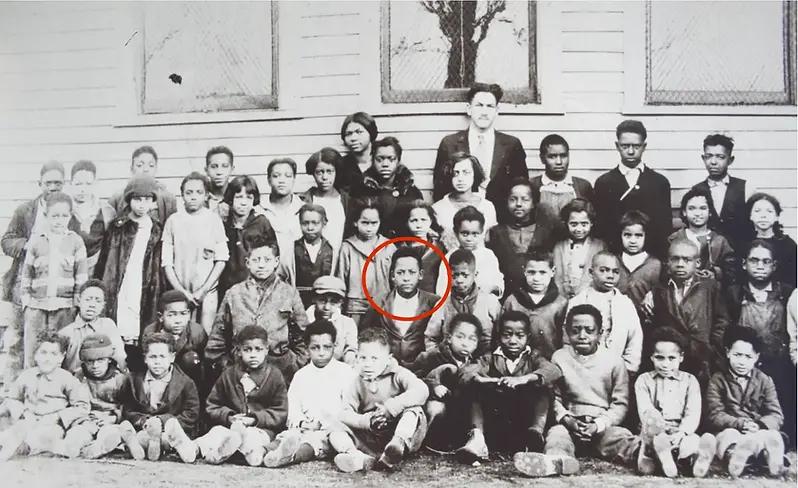
On the night of August 7, 1930, the town of Marion, Indiana, witnessed a spectacle of racial violence that would become one of the most infamous lynchings in American history. Thousands gathered to witness the brutal murder of two young African-American men, J. Thomas Shipp and Abraham S. Smith. Their lifeless bodies, hanging from a tree in the county courthouse square, were immortalised in a chilling photograph that served as both a stark reminder of racial terror and a catalyst for the civil rights movement. A third young man, 16-year-old James Cameron, narrowly escaped the same fate—an extraordinary twist in an otherwise grim narrative.
The Lead-Up to Tragedy
The events that culminated in the lynching began with the arrest of Shipp, Smith, and Cameron, accused of robbing and murdering a white factory worker, Claude Deeter, and of raping his girlfriend, Mary Ball. The alleged crime, whether true or not, ignited an explosive reaction in a town where racial tensions were already simmering. Word of the arrests spread rapidly, and a mob began to form outside the jail, fuelled by anger, fear, and a deep-seated history of racial violence.
The local chapter of the NAACP foresaw the danger and attempted to have the suspects moved to safety, but their efforts failed. As night fell, the mob’s resolve hardened, and the fate of the three young men was all but sealed.
The Lynching of Thomas Shipp and Abraham Smith
The crowd, estimated to be as large as 5,000 people—including women and children—stormed the jail, armed with sledgehammers. They overwhelmed the authorities with little resistance, dragging Thomas Shipp, Abraham Smith, and James Cameron out into the night. The brutality escalated quickly; the young men were beaten mercilessly before being led to the courthouse square.

Shipp and Smith were hanged from a tree, their broken bodies a grim spectacle for the gathered crowd. In a moment of desperate struggle, Smith attempted to free himself from the noose, but the mob ensured his fate—his arms were broken to prevent further resistance. Cameron was next. The noose was placed around his neck, and it seemed inevitable that he too would die. But, in an extraordinary turn of events, an unidentified woman—joined by a local sports hero—stepped forward, insisting that Cameron had no involvement in the crime. Whether due to this intervention or some other unseen force, Cameron was spared. The mob, inexplicably, allowed him to be returned to jail, where he would later face a separate legal battle.
The Photograph and Its Impact
The horror of that night did not end with the deaths of Shipp and Smith. Local photographer Lawrence Beitler captured the gruesome scene, producing an image that would be sold by the thousands in the days that followed. The photograph remains one of the most recognisable visual records of American lynching—two lifeless bodies swaying under the courthouse tree while the crowd, some smiling, others indifferent, stare into the camera.

In 1937, Abel Meeropol, a Jewish schoolteacher from New York City and later the adoptive father of the sons of Julius and Ethel Rosenberg, saw a copy of Beitler’s 1930 photograph. Meeropol later said that the photograph “haunted [him] for days” and inspired his poem Bitter Fruit. It was published in the New York Teacher in 1937 and later in the magazine New Masses, in both cases under the pseudonym Lewis Allan. Meeropol set his poem to music, renaming it Strange Fruit. He performed it at a labor meeting in Madison Square Garden. In 1939, it was performed, recorded, and popularized by American singer Billie Holiday. The song reached 16th place on the charts in July 1939 and has since been recorded by numerous artists, continuing into the 21st century.

The Aftermath: Justice Denied
Despite national outrage, justice was elusive. The Indiana Attorney General and local NAACP leader Flossie Bailey worked tirelessly to bring the leaders of the lynch mob to trial. However, an all-white grand jury refused to indict anyone. Attorney General James M. Ogden pressed forward, filing charges against four men identified as ringleaders. The results were depressingly predictable—each one was found not guilty by all-white juries. Even the sheriff, accused of failing to protect the prisoners, faced no real consequences.
James Cameron, despite being spared by the mob, was not free from legal consequences. In 1931, he was convicted as an accessory to murder before the fact and sentenced to several years in prison. After his release, Cameron dedicated his life to civil rights activism. He moved to Detroit, where he found work and pursued an education, later returning to Indiana to champion equal rights. In 1988, he founded America’s Black Holocaust Museum in Milwaukee, Wisconsin, ensuring that the history of racial violence in the United States was not forgotten.
Remarkably, in 1991, Cameron was officially pardoned by the state of Indiana, a long-overdue recognition of the injustice he had suffered.

Legacy and Reflection
The lynching of J. Thomas Shipp and Abraham S. Smith remains one of the most documented cases of racial terror in American history. The photograph taken that night continues to serve as a painful reminder of the deep-seated racism that plagued the nation for centuries. While progress has been made, the shadow of such violent history lingers, informing present-day discussions on racial justice, police brutality, and systemic inequality.
James Cameron’s survival and later activism stand as a testament to resilience in the face of unimaginable horror. His story is not just one of survival but of defiance, education, and the unyielding pursuit of justice. His museum, America’s Black Holocaust Museum, continues to educate and preserve the truth of racial violence in the United States.
The story of that August night in 1930 is not just history—it is a warning. A society that forgets the horrors of its past is doomed to repeat them. The legacies of Shipp, Smith, and Cameron serve as stark reminders that the fight for justice is ongoing, and history must be remembered, not just as a cautionary tale but as a call to action.



Leave a Reply